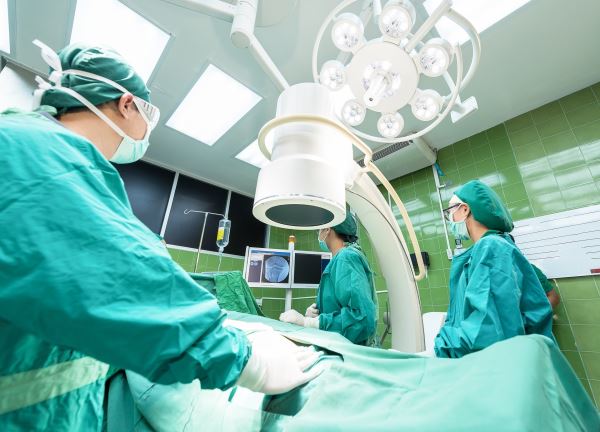The first minimally invasive surgery (MIS) was performed in 1910 and since then the practice has come a long a way with the introduction of surgical robots like the da Vinci surgical system.
Da Vinci surgical robots have been used in more than three million MIS procedures since 2000. There is a range of different da Vinci systems and attachable arms to accommodate multiple different surgical procedures and techniques.
Surgical robots are being used in a multitude of operations, spreading across urology, gynaecology, general surgery, thoracic surgery and cardiac surgery specialisms.
For example, the da Vinci surgical robot system is used in the Royal Prince Albert (RPA) Surgical and Robotic Training Institute in Sydney, the only robotic surgery training institute in the southern hemisphere.
It is also one of the only public tertiary referral hospitals in Australia to have a da Vinci Xi surgical robot, da Vinci’s most advanced system. The institute believes that surgical robots are bettering patient treatment.
Robots in the operating room
Surgery involving robots is different to that of surgery performed manually by humans, it does not require interaction with the patient.
During a procedure using robotics, the surgeon sits at a console and guides the robot using small hand movements and 3D images. The robot preforms a precise and minimally-invasive procedure on the patient using a series of small incisions.
EU Automation APAC director John Young believes the use of robotics in surgery can help offer patients a better standard of health care.
“The use of surgical robots is greatly praised for improving surgical precision for a variety of reasons. A magnified, high-definition 3D image projected on the connected console allows the surgeon to view the operation site in greater detail and resolution than what is capable with an unaided human eye,” Mr Young said.
“The console can also display reference images, such as previous scans of the affected area, alongside the real-time surgery footage. This allows the surgeon to clearly see where the symptomatic areas were, even after some alteration has taken place.”
Precision is key
The robot is able to use infrared imaging, which can clearly show abnormal tissue and blood flow at the site, further boosting the robot’s accuracy.
The proportion the robot moves per hand movement by the surgeon can be altered, enabling the robot to make extremely small, precise movements. The robotic instruments also have an increased range of motion and can filter out any tremors, furthering precision. The surgeon retains 100 per cent control of the robot throughout the whole procedure.
“Robotics in surgery also allow the procedure to take place using smaller incisions, meaning there is a smaller area that needs to heal, lessening patient pain, shortening recovery time and decreasing scar size. Working through small incisions also means less of the internal body is exposed, which reduces blood loss and the chance of infection,” Mr Young explained.
The use of robots also lessens the pressure on surgeons to maintain high stamina and concentration during the operation, especially as it is difficult to predict exactly how long a surgical procedure will last.
“Many robots have an additional arm, which gives the surgeon 50 per cent more operating capability,” Mr Young said.
“Being able to control the procedure from the console with helpful reference images decreases the surgeon’s cognitive load and fatigue levels. These factors ensure the surgeon can perform to the best of their ability for a longer period of time.”
Caring for technology
Technology has been crucial in advancing surgery. Surgical robotics make surgery safer and more effective and are growing in popularity. However, in order for robots to convey maximum benefits, it is important to maintain them.
“With surgical robots becoming an increasingly common feature in MIS, maintaining these devices is an important consideration. If a surgical robot was to break unexpectedly, before or even during a crucial procedure, it would risk putting lives on the line,” Mr Young said.
“It makes greater sense to replace the part that isn’t working correctly rather than the entire robot, so it’s important that replacement components are easily available, meaning repairs can be made without causing disruption.”
Speed is of the essence when keeping surgical robots up and running, so it is important to consider the lifespan of all the individual components during manufacturing.
Mr Young recommends opting for a component with a longer lifespan, even if it is more expensive, than a cheaper component that risks faster obsolescence as it would be more beneficial to make the investment to ensure greater longevity in the long run.


